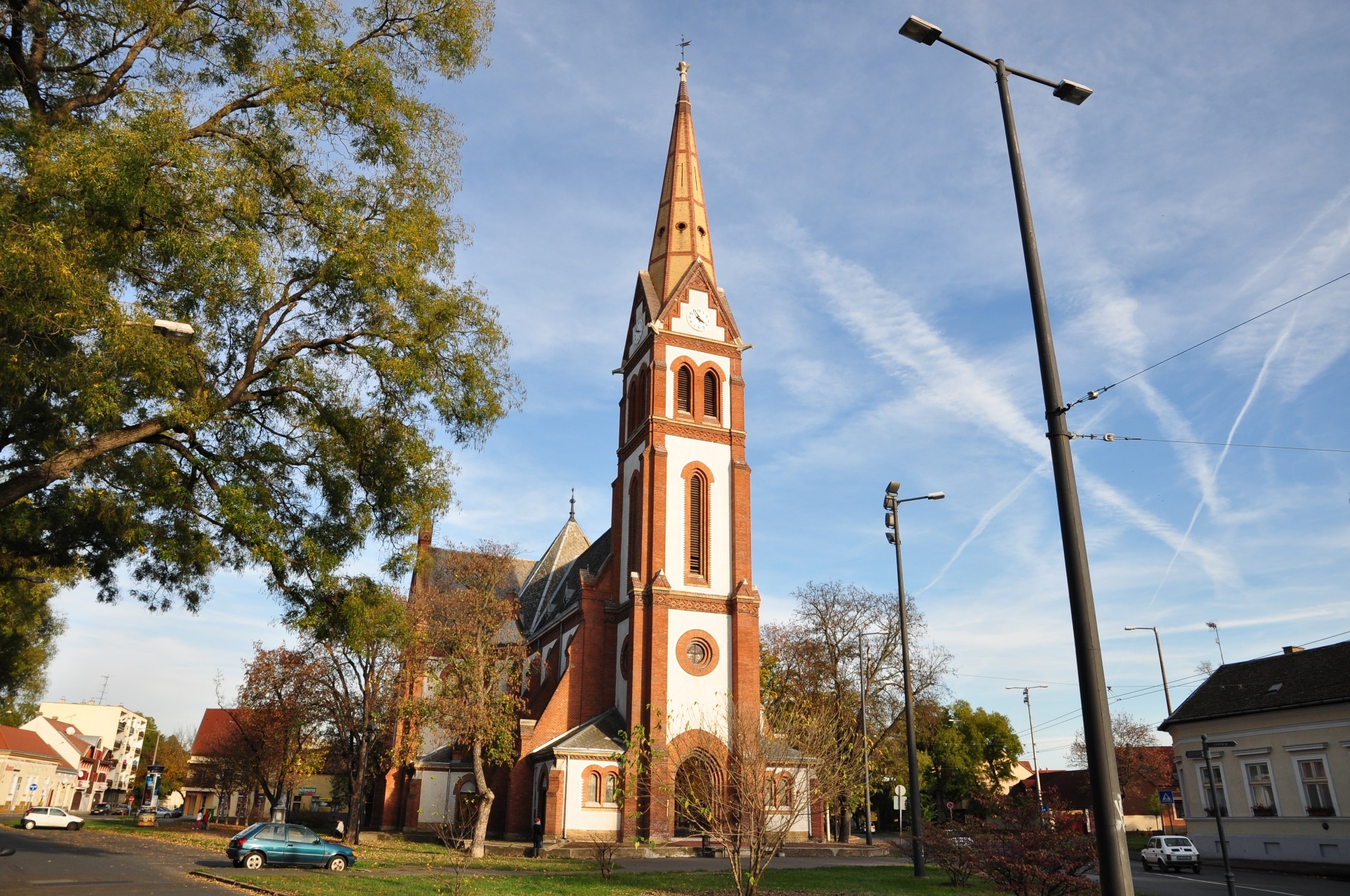 Erected in 1888 due to the bequest of chief justice István Szombathy, the Kossuth street building is unique among the Reformed churches. The architect Samu Petz considered the Neo-Gothic „Red Church” to be his main work. Breaking away from the conventions of the traditionally undecorated interiors of the Reformed churches, the walls are covered with the seccos of painter Jenő Haranghy, a professor of the School of Applied Arts. The murals that represent Biblical symbols were made in 1936, following the principles laid down by Professor Sándor Csikesz, a teacher of the Theology.
Erected in 1888 due to the bequest of chief justice István Szombathy, the Kossuth street building is unique among the Reformed churches. The architect Samu Petz considered the Neo-Gothic „Red Church” to be his main work. Breaking away from the conventions of the traditionally undecorated interiors of the Reformed churches, the walls are covered with the seccos of painter Jenő Haranghy, a professor of the School of Applied Arts. The murals that represent Biblical symbols were made in 1936, following the principles laid down by Professor Sándor Csikesz, a teacher of the Theology.
Situated near the church and the Cegléd street gate, the former Dobozi-cemetery lay beyond the ditches of the town. One of its most famous tombstones marked the grave of the reformator Bishop Péter Juhász Melius. The graves of the local chief justices, college professors and Reformed pastors fell victim to the expansion of the city. Their place was occupied by the Fényes udvar („shiny courtyard”) blocks of flats built from the late 1960s on. Melius’ tombstone can be seen today in the museum of the College, while other significant sepulchres are kept in the garden of the Debrecen-Széchenyi-kert church.